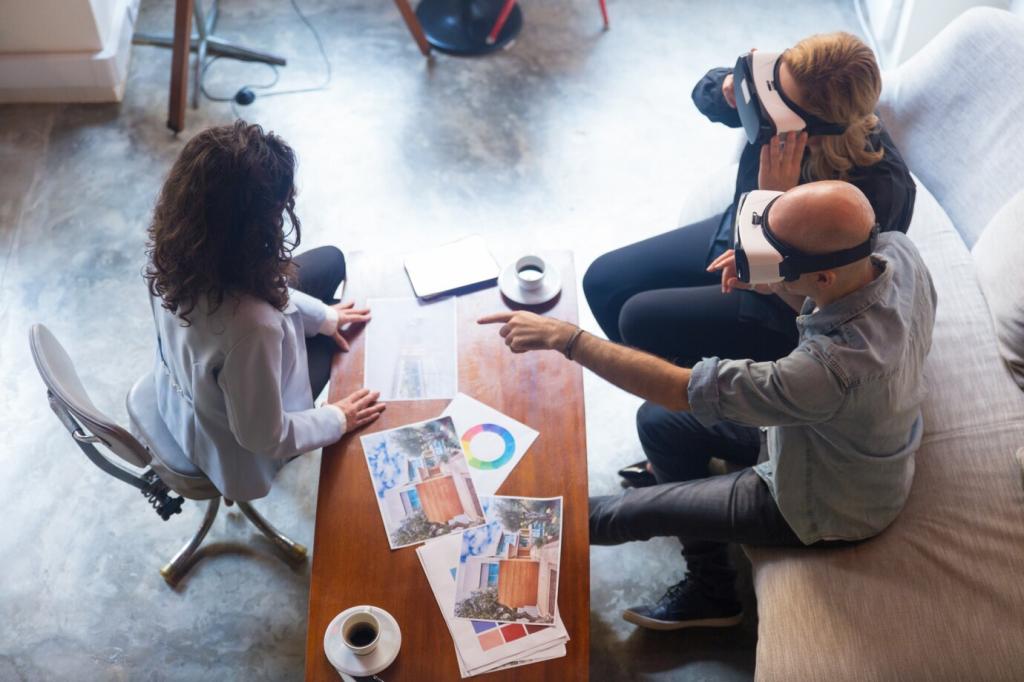Chosen Theme: Design Thinking Workshops
Step into a creative space where empathy fuels ideas and prototypes turn talk into action. Today we explore Design Thinking Workshops—how they work, why they inspire, and how you can run unforgettable sessions. Subscribe for fresh workshop techniques, and share your questions to shape our next topics.

Design Thinking Workshops: Foundations and Flow
Design Thinking Workshops align diverse minds around real user needs, creating momentum through clarity, constraint, and collaboration. They turn ambiguity into tangible experiments, reduce decision friction, and surface hidden assumptions worth testing together.


Design Thinking Workshops: Foundations and Flow
Empathize, Define, Ideate, Prototype, and Test form a flexible backbone. Timeboxing, divergent and convergent cycles, and explicit decision points keep energy high while ensuring ideas become concrete next steps everyone supports.
Empathy in Action During Design Thinking Workshops
Run short, focused interviews, context-of-use walkthroughs, and artifact tours. Ask participants to show rather than tell. Capture quotes verbatim, then cluster observations into patterns that reveal unmet needs worth pursuing.
Empathy in Action During Design Thinking Workshops
Use journey maps and jobs-to-be-done statements to frame struggles and desired outcomes. Mark emotional highs and lows, then connect them to functional, social, and personal jobs your prototypes must address credibly.


Divergent Thinking Warm-ups
Start with quick sketching rounds, word storms, and forced analogies. Use upbeat music and strict timers. Encouraging quantity first prevents early convergence and keeps quieter voices confidently participating.
Structured Brainstorming that Sticks
Run Crazy 8s, SCAMPER, or “How Might We” cascades. Mix solo thinking with group synthesis, then press for variant ideas beyond obvious themes. Label assumptions explicitly to test later.
Prioritization without Politics
Score ideas by desirability, feasibility, and viability. Dot vote anonymously, then discuss outliers. Use impact versus effort maps to choose prototypes that maximize learning per hour, not prestige or convenience.
Rapid Prototyping Inside Design Thinking Workshops
Match fidelity to the question. Paper sketches test flows; clickable wireframes test comprehension; role-plays test service interactions. Lower fidelity keeps minds open and reduces sunk-cost bias during iteration.

Facilitation Mastery for Design Thinking Workshops
Roles that Keep Momentum
Assign facilitator, timekeeper, recorder, and vibe-checker. Clear roles reduce cognitive load, protect focus, and make participation equitable, especially when hierarchy might otherwise silence useful, fresh perspectives.
Managing Time and Energy
Alternate high-intensity sprints with reflective pauses. Use stretch breaks and visual timers. Name the goal of each activity so people understand why the pace matters and where they can breathe.
Handling Conflict Constructively
Normalize disagreement, separate ideas from identities, and bring data or user stories back to the center. If stuck, revisit the problem framing, not personalities, and let a quick experiment decide.

Documenting Decisions and Assumptions
Capture the final problem statements, prototype versions, test findings, and open questions. Tag assumptions by risk level, then assign owners to validate them with lightweight, time-bound follow-up experiments.

Creating a 30-60-90 Plan
Define immediate next tests, midterm integration steps, and longer-term bets. Include metrics, budgets, and approvals. A simple roadmap prevents drift and keeps executive sponsors confidently aligned.

Keeping the Community Alive
Host retrospectives, share patterns, and celebrate learnings, not just wins. Create a community channel where workshop alumni trade templates, critique prototypes, and volunteer to join the next sprint.
